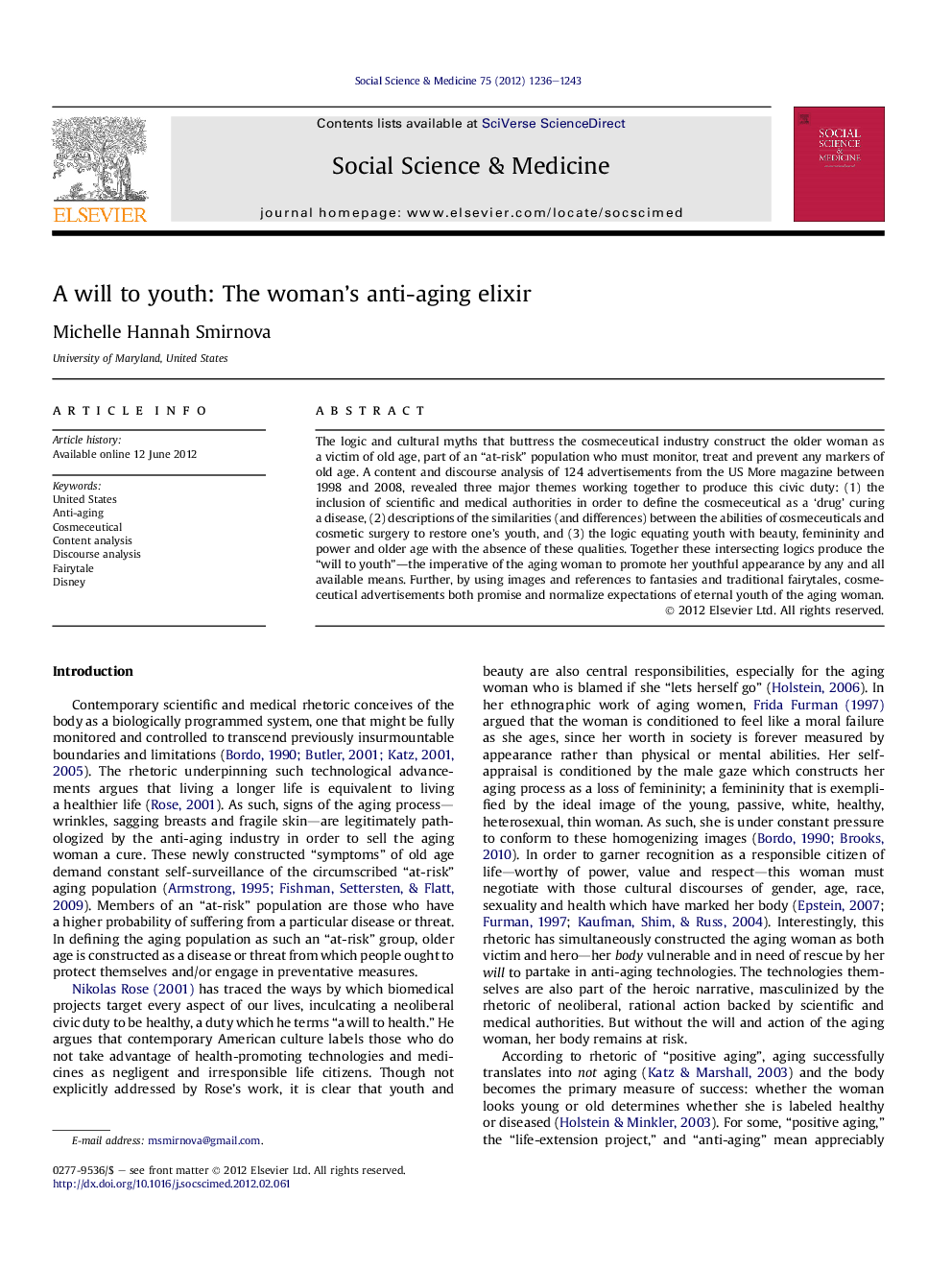| Article ID | Journal | Published Year | Pages | File Type |
|---|---|---|---|---|
| 952467 | Social Science & Medicine | 2012 | 8 Pages |
The logic and cultural myths that buttress the cosmeceutical industry construct the older woman as a victim of old age, part of an “at-risk” population who must monitor, treat and prevent any markers of old age. A content and discourse analysis of 124 advertisements from the US More magazine between 1998 and 2008, revealed three major themes working together to produce this civic duty: (1) the inclusion of scientific and medical authorities in order to define the cosmeceutical as a ‘drug’ curing a disease, (2) descriptions of the similarities (and differences) between the abilities of cosmeceuticals and cosmetic surgery to restore one’s youth, and (3) the logic equating youth with beauty, femininity and power and older age with the absence of these qualities. Together these intersecting logics produce the “will to youth”—the imperative of the aging woman to promote her youthful appearance by any and all available means. Further, by using images and references to fantasies and traditional fairytales, cosmeceutical advertisements both promise and normalize expectations of eternal youth of the aging woman.
► Highlights the aesthetic component to the life-extension project—which equates a better life with a longer life. ► Biomedical & cosmetic technologies draw from similar discourses that marks the body of the aging female in Western society. ► Compliments gerontology research about the importance of “youth” to the aging female with a focus on advertising rhetoric. ► Cosmeceutical advertisements blur the boundary between technological promises and fairytale dreams.
